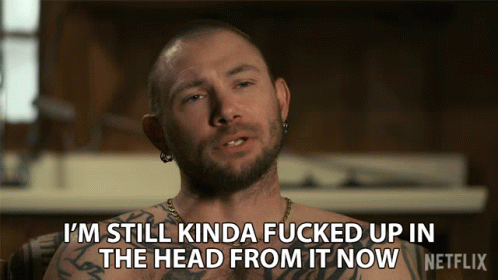Tiger King is not a documentary that is likely to age well. Its cinematic approach included misgendering cast members, intense misogyny, and a laissez-faire approach to animal welfare. But Tiger King hit at a cultural moment where humanity was desperate to watch something more out of the control than the geopolitical catastrophe we are living through.
Through the haze of dubious animal handling, aggressive and dangerous interpersonal conflict, and all-around disorienting approach to life and personal finances… there’s a conversation worth opening up about sexual health.
Stay with me here.
A central shock element of Tiger King was Joe Exotic’s relationships with two young men, John Finlay and Travis Maldonado. Layered into their polyamorous relationship were issues of drug use, manipulation and coercion, infidelity and much more.
If you were to take a sexual history for Joe’s husband, John Finlay, you think it might be straight-forward. This was a man in a sexual relationship with another man. There may be some concerns about sexually transmitted infections, no risk of pregnancy, end of conversation.

But what would a true in-depth sexual history for John uncover? I’ll use the 5 P’s Approach to sexual history taking to break down some commonly overlooked sexual health issues and provide some guidance for how clinicians can better discuss these situations with their own clients.
#1: Partners
We know that John was in a polyamorous relationship with Joe and Travis. But we don’t really know what that relationship looked like on the inside. What were the dynamics between all partners? Did Travis and John get along? Was there any fear of violence from either partner?

This is where the question, “Tell me about any partners you have (romantic or sexual)” opens space for discussion. Some patients may disclose multiple partners that all know each other and are mutually involved. They may note hookups, casual relationships, committed and monogamous relationships—the configurations are nearly endless. But it is the details of those relationships, and how they make the patient FEEL that you want to uncover as a provider.
We don’t have to jump right in with intimate partner violence screening questions here, but a conversation about how a patient views their partner(s) opens the door to that kind of disclosure. In John’s case, we can identify elements of power asymmetry and coercion without ever asking about violence. First the age difference: when they met, John Finlay was 19 and Joe Exotic was 40. Then the financial complications: Joe hired John to work at the zoo, becoming both his boss and lover. Finally, the addition of a third partner to the relationship: Travis Maldonado was also very young, and it’s unclear how enthusiastic John was about his addition to the household.
A deep dive into John’s relationships would probably uncover serious problems: emotional violence, threats, erratic and unpredictable mood swings from Joe that left John scared and vulnerable. He might have been interested in a referral to a counselor or to a domestic violence center. He most certainly needed a safety plan for navigating his dangerous home life.

#2: Practices:
This section of a sexual history is where the most assumptions get made. John is in a relationship with Joe and Travis, so we assume he is having anal sex with at least one of them. Because, well, that’s what gay men do, right? But do we know that for sure?
A good sexual history would ask John what kind of sex he is having with each partner. Maybe he never interacts with Travis, and only bottoms for Joe. Maybe he doesn’t have sex with either partner.
An astute provider would also ask if he ever mixes sex and drugs. We anticipate that John may have some kind of drug use, based on his dental issues, but that doesn’t mean we simply chart it and move on. How does John feel about his drug use? Who provides him his drug of choice? Does he have any financial issues accessing his drug of choice? Does he ever feel he needs to trade sex for money or drugs? None of these are questions to rapid-fire at a patient, but a deeper investigation into a patient’s motivations, behavioral constraints, and active choices will build a more complete picture of their health needs.
More to come:
Perhaps you realize at this point that this sexual history is not really about sex at all. Sexual history taking is an opportunity to assess the needs of your patient from a holistic perspective. They may want referrals for domestic violence support or drug treatment or harm reduction services. They may need to apply for food stamps. They may want to know if their relationship seems “healthy” or “normal” to you. As a provider, you may not know or have immediate access to these things. But if you are prepared for a conversation that could open many doors, you can direct your client to other people in your network who can help.
In Part Two of this post, we’re going to talk about the other 3 P’s of a sexual history. Stay tuned.
Disclaimer: This information is gathered from the Tiger King documentary and journal pieces published after its release and has not been verified. None of the information in this post constitutes definitive information about John Finlay or his actions. If John or anyone from his family asks me to correct or remove information from this post, I will happily do so.




